Welcome to the Boothby Product Dive, an in-depth look at one brand of note. Whilst The Glendronach does sponsor this story, the editorial is Boothby’s own.
When it comes to sherried single malt whisky, for me The Glendronach immediately springs to mind. I had the good fortune of visiting the distillery a few years back — it’s about 30 minutes out of Dufftown, in Aberdeenshire — and is a beautiful distillery: a long unpaved road lined with trees leads down to the stillhouse, where through the windows you can see the saxophone-shaped spirit stills; the warehouses’ grey stone walls have been blackened with time (and the angel’s share), window frames are painted red, and a stream runs through the distillery. You might see a sheep or two, too.
It’s also a distillery with a great reputation. It holds one of the oldest distilling licences in Scotland, and has just undergone a refresh on its packaging, along with picking up a new new raison d’etre of ‘raising expectations.’
Below, we hear from The Glendronach master blender Dr Rachel Barrie for this piece, get a brief history lesson on the changing fortunes of the distillery, and dive into some tasting notes. Let’s get into it.
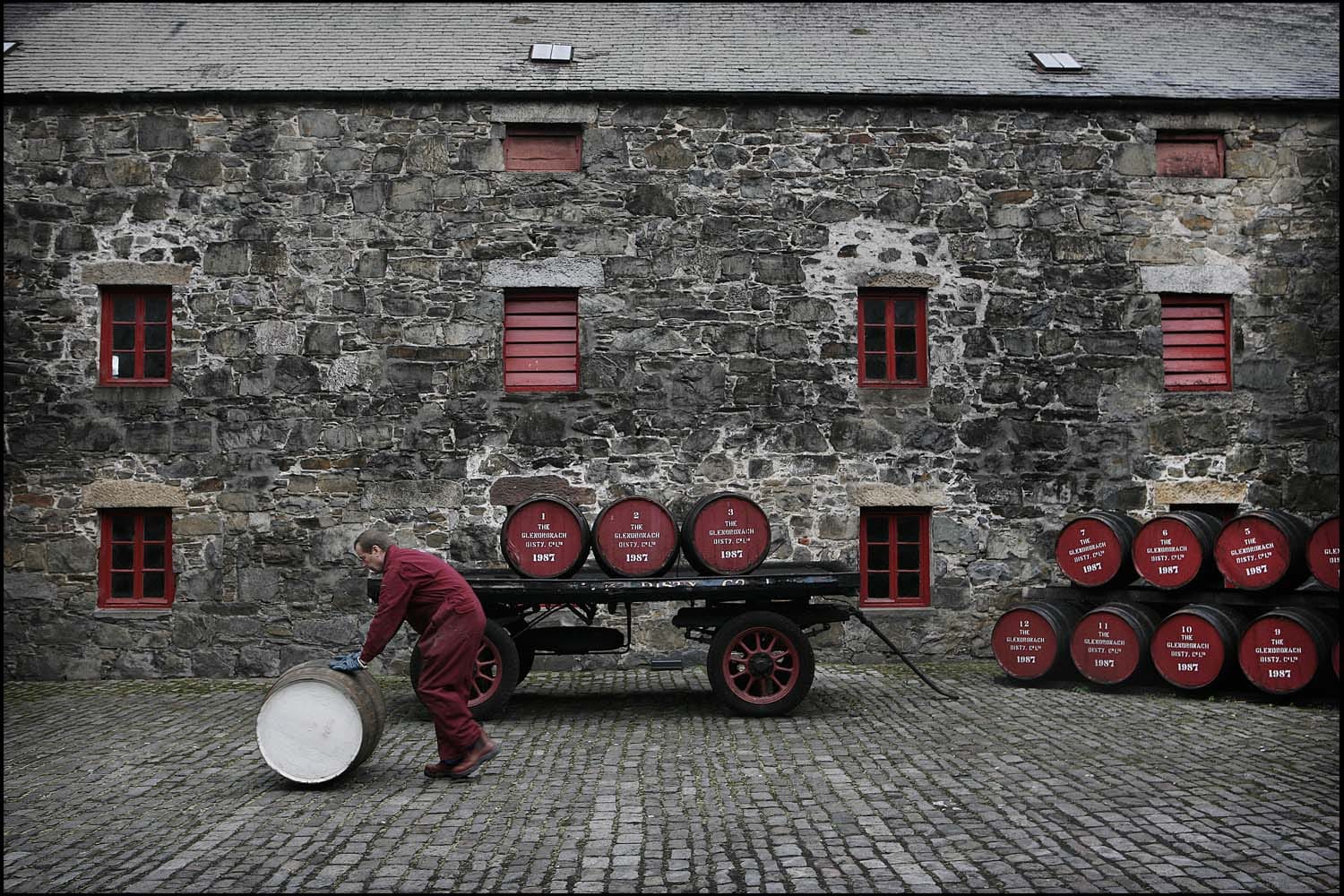
A (very) brief history of The Glendronach
The Glendronach distillery was founded by James Allardice in 1826 — almost 200 years ago — and is found in the Highlands in the valley of the Forgue, Aberdeenshire. The name Glendronach is derived from the Gaelic for valley of the brambles — and the whisky is known as something of a sherry bomb, thanks to its exclusive maturation in sherry casks.
The Glendronach was granted one of the earliest licences for distilling, in 1826, and the distillery was founded by James Allardice and a group of local farmers. The distillery was bought by Walter Scott in 1830, and by 1862 had become the largest duty paying distillery in the Highlands. The distillery was bought by Charles Grant in 1920, before being sold in 1960 to William Teacher & Sons and doubling their stills from two to four. The distillery changes hands again in 1976, when Teachers is bought by Allied Distillers, which mothballed the distillery in 1996.
The Glendronach resumed distilling in 2002; in 2005, the distillery is acquired by Pernod Ricard, before The BenRiach Distilling Company buys it in 2008 and launches their 12, 15, and 18 Years Old expressions for the first time in 2009. The Glendronach — and The BenRiach Distilling Company — is bought by Brown-Forman in 2016, and Dr Rachel Barrie becomes the master blender.
This year, they’ve launched a refresh of their bottles with a new brand focus on ‘Raising Expectations.’
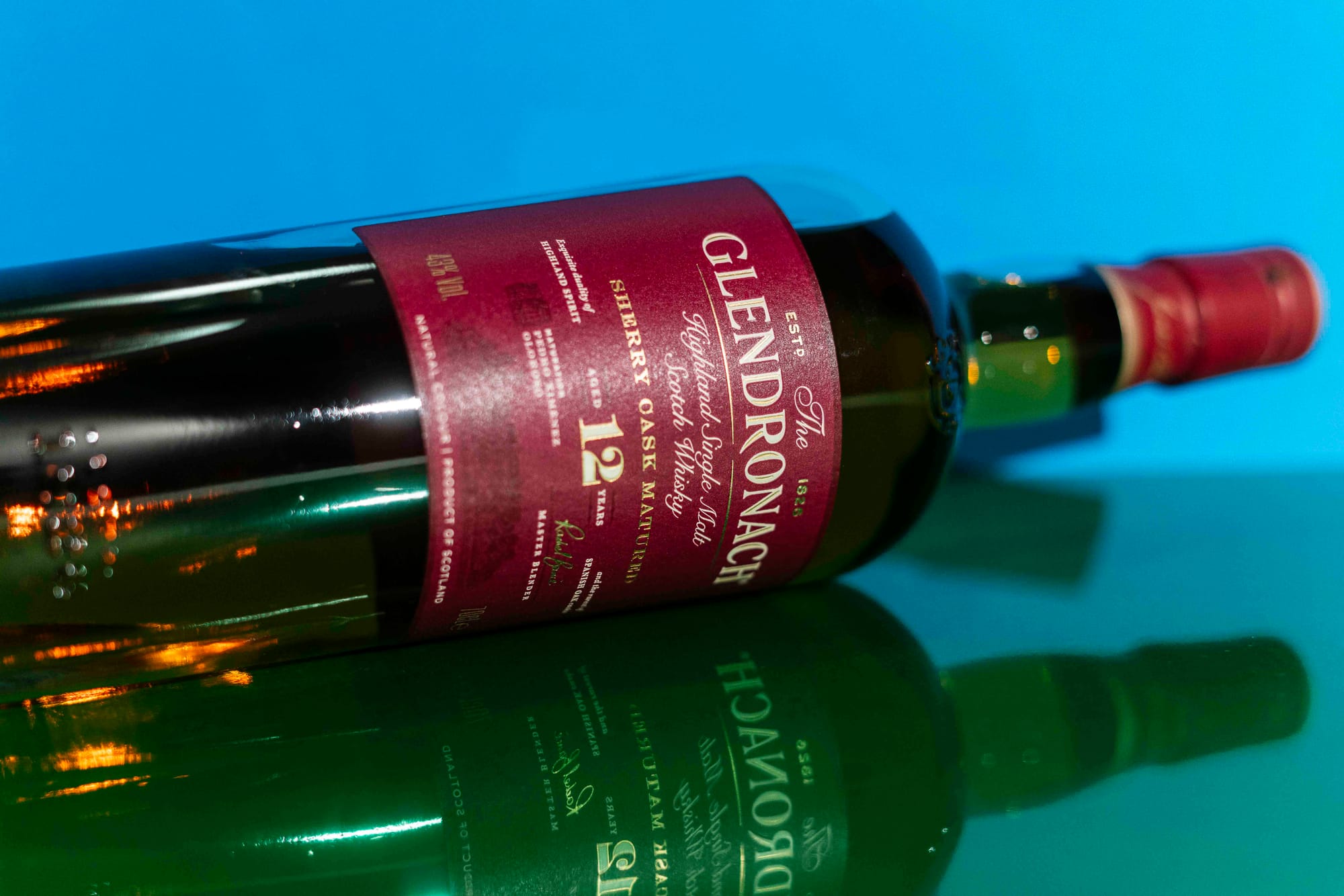
How is The Glendronach made?
Much like other distilleries in the industry, they stopped malting their own barley back in the 1990s and today, the distillery uses the Laureate and Sassy varieties from Baird’s Maltings, milled on their Bobby Mill at the distillery which dates back to 1913.
The distillery has nine large wooden washbacks made from Scottish larchwoood.
There are two wash stills and two spirit stills in the Glendronach stillhouse.
“So I don’t know what James Allardice was thinking back in 1826 — I wish I knew,” says Dr Barrie. “He created stills that are remarkable. The wash stills are like a saxophone in shape, and they have a real duality between the boil ball on the base, which gives you reflux. They’re not too high, and the top of the lyne arm is like a gooseneck, it is just like a saxophone — and it goes up and goes down. And this makes for a very, very robust and characterful spirit, which then marries perfectly in the finest sherry casks.”
The duality that Dr Barrie speaks about — between robustness and finesse — begins in the spirit. The robustness is there, but so too is the finesse, she says.
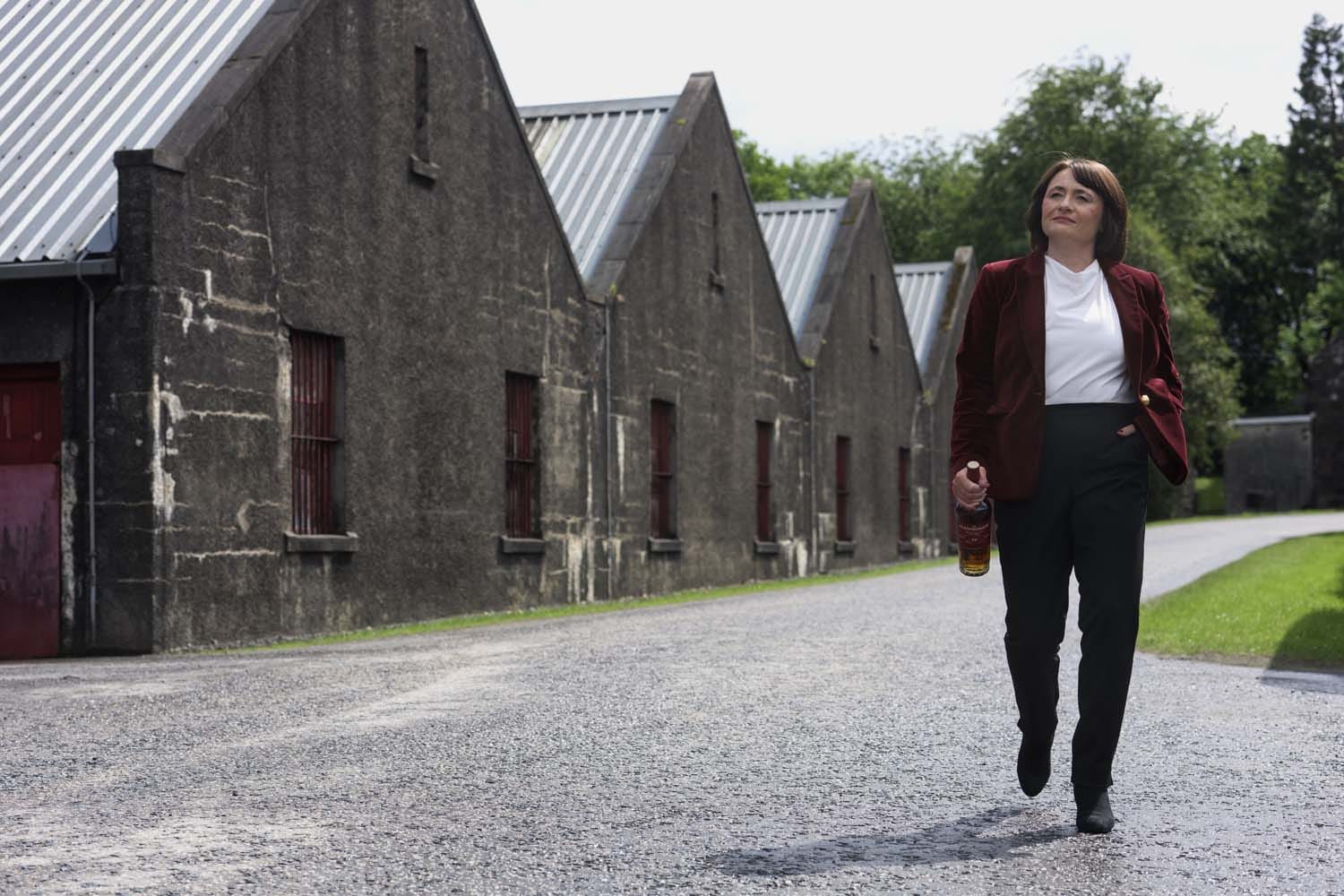
“It’s the things that you cannot smell in the spirit off the still. There is almost an aroma that’s like brambles and green grapes and grape vines — there’s almost these chocolatey notes in the spirit. It’s amazing because it’s not been near a cask yet. A little whiff of tobacco. And it’s very expressive. I think that’s the point I’m trying to get across: it’s a very, very expressive spirit. We’ve got quite a short foreshows and then a long spirit cut. We have this symphony of flavour even in the new make spirit. So it starts there and then it is unlocked during the maturation.”
The spirit is aged on site at Glendronach, and they have three dunnage warehouses and three racked warehouses. They employ a mix of Pedro ximenez and oloroso sherry casks for the bulk of their ageing, though there are other cask types on site; they prefer to use sherry casks made from Spanish oak, as opposed to American or European oak.
“It’s a slow and steady maturation, which I always think wins the race, because then you get complexity and you get the top notes and you have that duality,” Dr Barrie says. “That is the beauty of the sherry casks. That is the beauty of being in quite a humid environment and earthen floor dunnage warehouses.”
For the 12, 15, and 18 Years Old Glendronach bottlings, there is no colour added to the final expression, and they range in ABV from 43 percent (for the 12 Years Old) to 46 percent for both the 15 Years Old and the 18 Years Old.
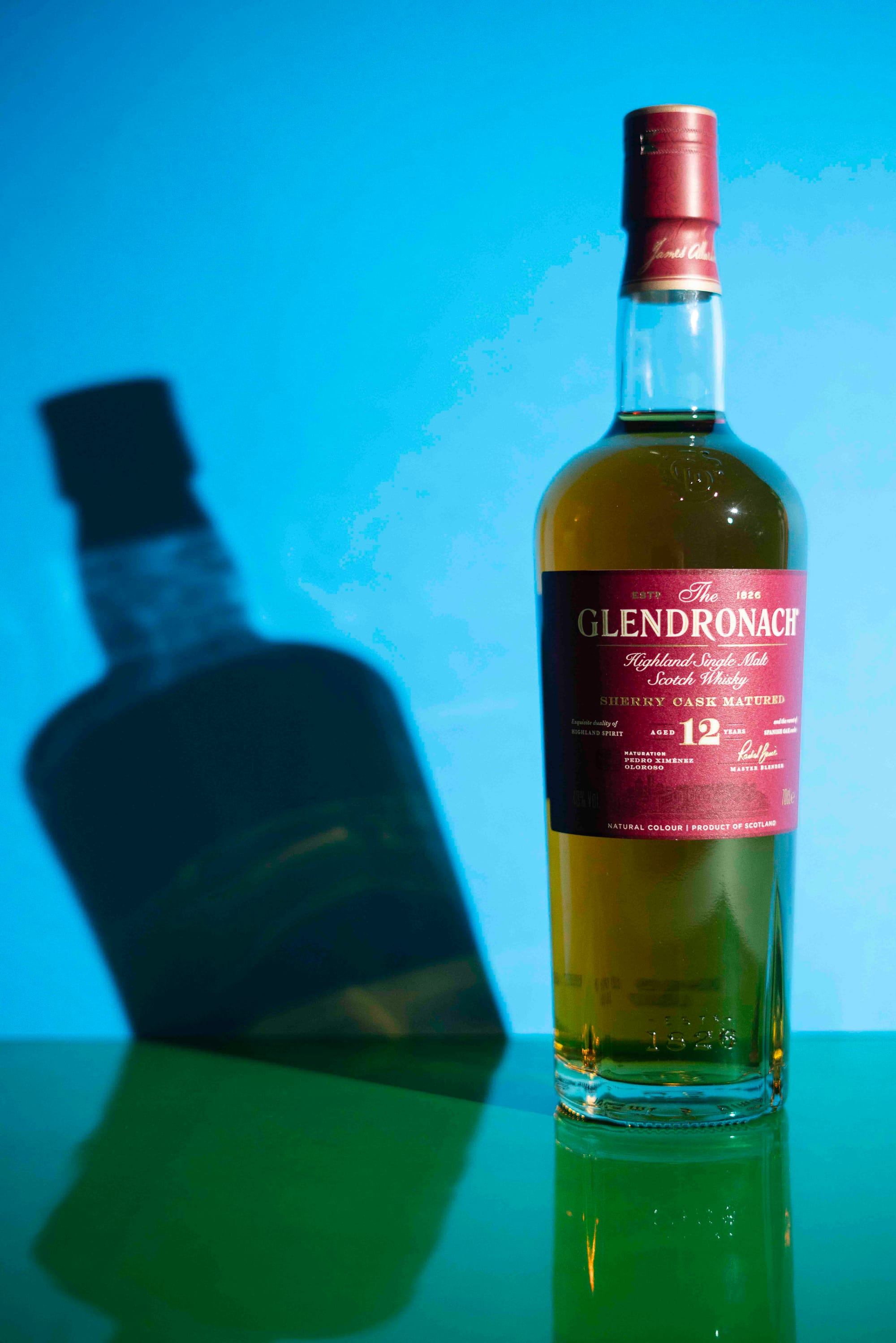
The Glendronach tasting notes
Glendronach 12
What they say: Rich amber red gold in colour. On the nose: sherries autumn fruits meld with smooth chocolate praline, gingerbread and sun-dried raisin. Palate: Caramelised bramble, silky orange and sultana envelope the palate with warming spice.
What we say: Full and generous palate, there’s a lightness to the spirit but a deep concentration of flavour — orange, sherries notes, and spice. A long and rich finish — it’s not a shy whisky.
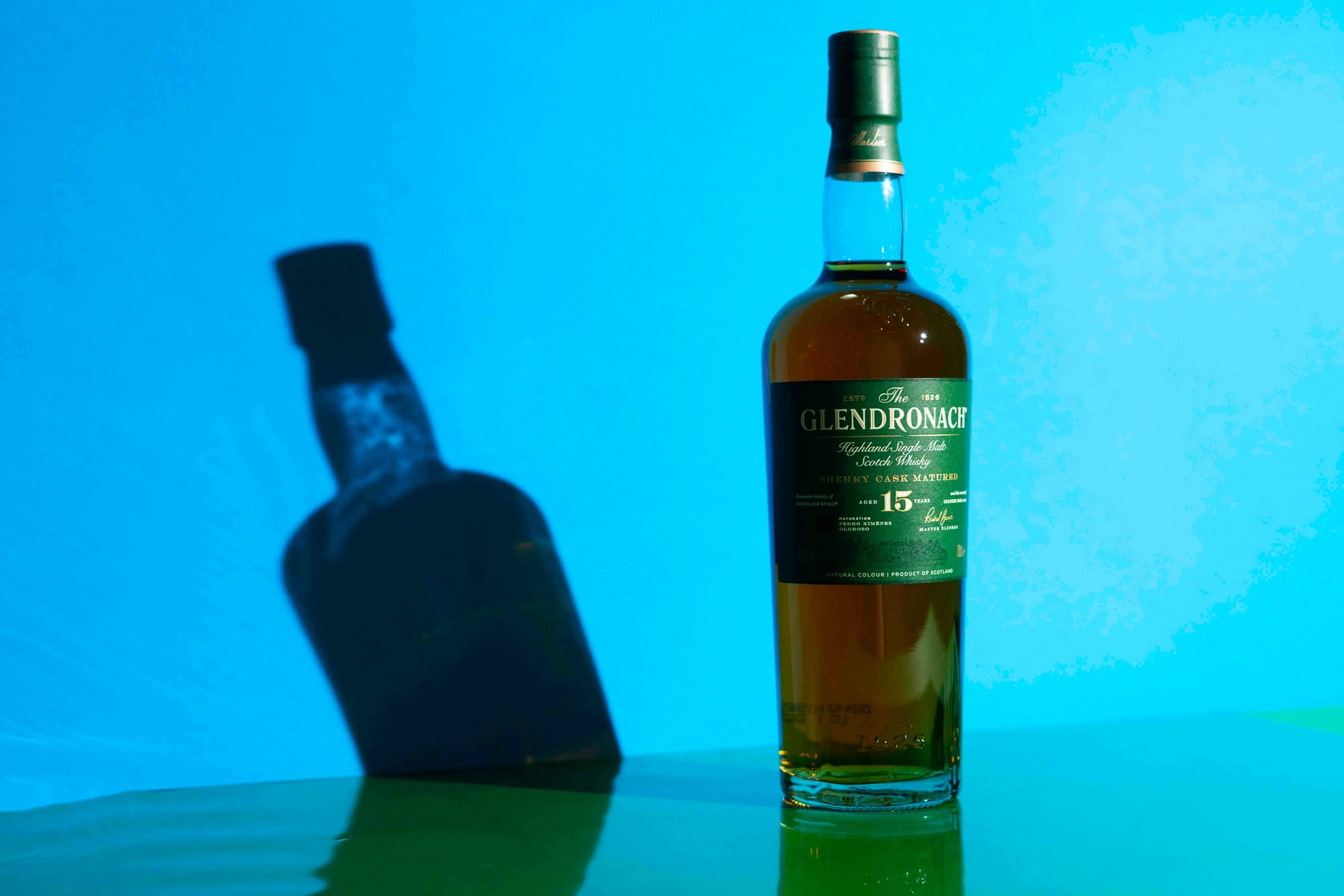
Glendronach 15
What they say: Antique copper with a golden hue. On the nose: an intoxicating burst of maraschino cherry, ripe bramble, and dark chocolate mint with hints of orange bitters and walnut liqueur. On the palate: honey-glazed apricot and ripe fig with a crescendo of black cherry, angelica, and muscovado.
What we say: Fragrance leaps from the glass: a little floral, stone fruit aromas, citrus zest and cacao; that chocolate note is there on a generous, full bodied, balanced palate, along with some cherry notes, marzipan, finely layered; leading to a super long and enveloping finish with notes of cacao, raspberry and spice. A whisky for sunsets and early evenings.
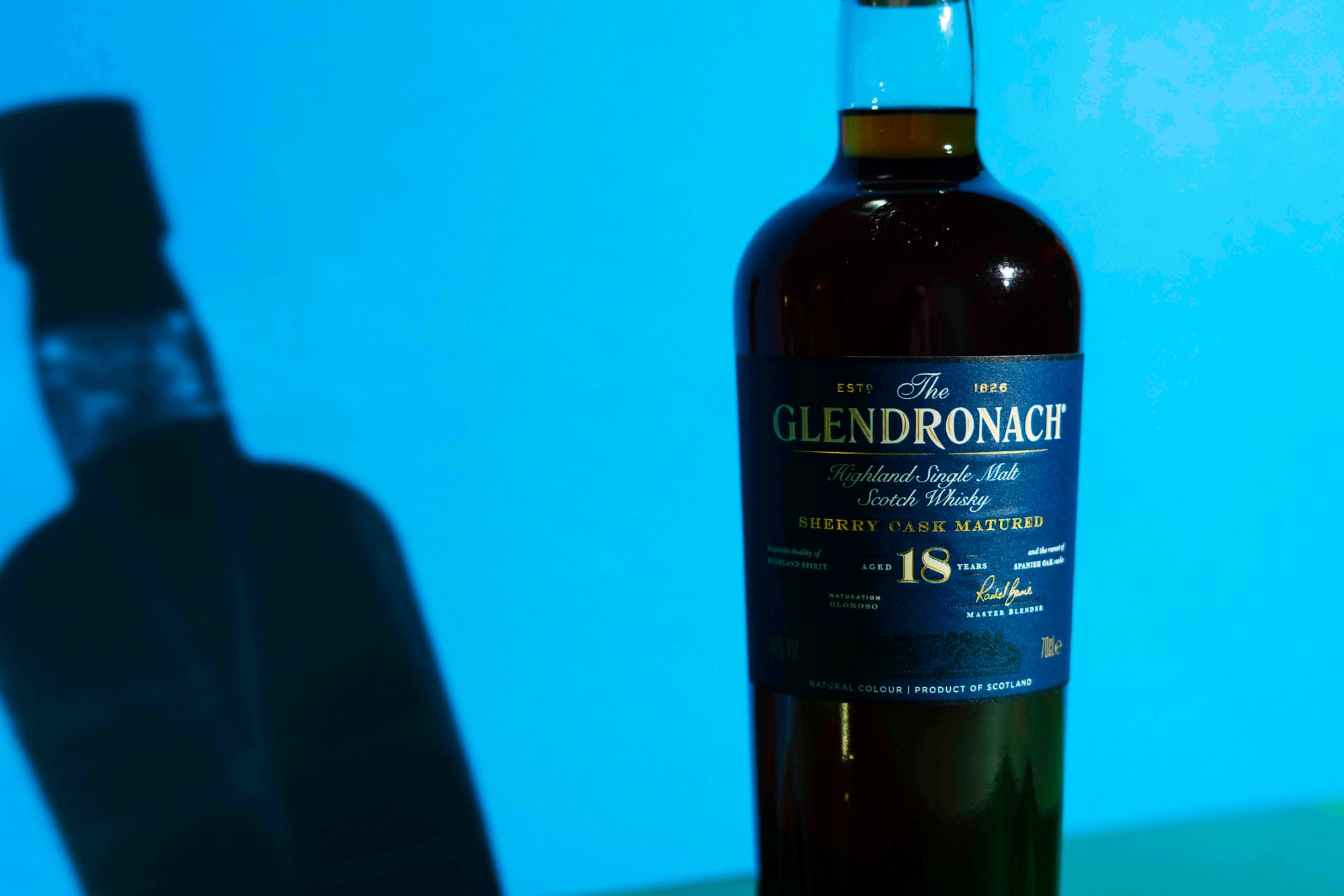
Glendronach 18
What they say: antique bronze in colour with tan amber hue. On the nose: deep aromatics of fudge and dark muscovado sugar. Fruit compote and morello cherries provide added layers of complexity. On the palate: Rich, dark and seductive. Remarkable flavours of stewed fruits and allspice marry together with classical aged oloroso and toasted walnut bread and chocolate orange.
What we say: Medium intensity nose with notes of port wine, raisin, cacao; the palate is rich and full, some tobacco character, orange, cacao, and spice, and a long finish — satisfying, complex, and leaves you wanting another sip. After dinner whisky.
Want to learn more?
You can find the new bottles of The Glendronach landing on back bars this month. To learn more, get in touch with your Brown-Forman sales representative or visit glendronachdistillery.com.










